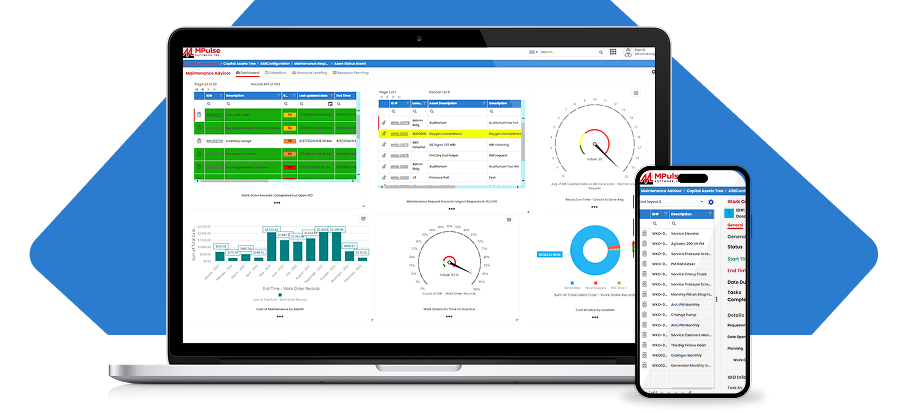The start of a new year always brings a fresh perspective. With that in mind, we wanted to share the CMMS trends that could impact your maintenance operations in 2023.
The last few years have shed light on who the essential workers really are, as well as the vital role of maintenance. Companies continue to rethink employee safety in the wake of COVID-19, with a careful eye on other challenges like an aging workforce and limited labor resources.
As we look towards 2023, we can apply these lessons and make our organizations better prepared for the future.
Proactive Maintenance
As global supply chain issues continue, a proactive maintenance strategy lessens the possibility of equipment or asset failure. That may include preventive maintenance software that will generate a schedule of PM tasks, making it simpler to follow the manufacturer’s guidelines. Or a condition-based maintenance (CBM) approach to keep tabs on the actual state of your critical assets by recording the output of any meters and gauges on that asset. Or data collected by the Internet of Things (IoT) devices and analyzed by CMMS software to help managers cut costs and find the best way to manage workloads and prevent emergency breakdowns.
Whichever proactive strategy you choose, properly maintained assets perform more efficiently, use less energy, and fail less often—extending their usable life. When a maintenance team establishes and regularly performs tasks that contribute to the upkeep of assets, an organization may be able to sidestep serious problems that arise as a result of neglect, as well as delay more expensive maintenance.
Compliance
Regulatory compliance continues to evolve and tighten for many industries after COVID and supply chain disruptions. CMMS software provides the right tools to document important compliance information, as well as features to make reporting on that data quick and easy when inspections or audits occur.
Organizations use CMMS to link all the elements of repair and maintenance work in one place. The data recorded for assets, employees, inventory, schedules, and work orders provides the basis for your compliance documentation. This information improves response times and completion rates with better access to historical data and other important details, like documenting preventive maintenance tasks on key assets.
Asset Performance Management
As the name suggests, the main purpose of asset performance management (APM) is to improve the performance of assets. As a result, they can continue to work in their intended function. It’s taking maintenance to the next level, where it’s easier to spot problems before they occur or identify ways to make your operations more productive.
APM maximizes the predictability and profitability of equipment or facilities with CMMS software and real-time data, analytics, reporting, and life cycle analysis to optimize asset performance and reliability. Additionally, you can use APM to minimize unplanned repair work, manage risk, reduce equipment failure, and extend asset life without unnecessary costs.
CMMS enables organizations to access real-time information about their assets. With this information, companies can determine the efficiency of their equipment and whether or not it should be repaired or replaced. It provides valuable data to help them decide how to run their operations effectively and efficiently.
Mobile
Maintenance happens in the field, so techs benefit from an adaptive interface that makes it easy to access work orders and make updates wherever they are, without stopping by the office or finding a computer. Mobile CMMS makes it possible to access vital maintenance data anywhere, via Wi-Fi or cellular connection. Improved security features mean you can safely control access to your data, even when you aren’t in the office.
Using an adaptive interface and smart devices, maintenance techs can report problems as they find them and capture data when they are working on the job. Best of all, your team members don’t need to come back to the office to get the next work order—they can see their assignments wherever they are.
Inventory Management
The biggest benefit of parts and supplies management is controlling your cost of maintenance. You can get your fastest return on investment (ROI) by implementing inventory management. That’s because for most organizations, a lot of capital sits in the stockroom. Better management of parts and supplies helps your organization save time and money by improving tracking, stocking, ordering, and inventory processes. That’s more important during challenging times, like the current state of the supply chain.
With its inventory control and parts management features, CMMS software helps you prevent time- and money-wasting problems like running out of parts, searching for lost parts or duplicating inventory you didn’t know you had. Control your stock based on need and availability, so the right parts are on the shelf, yet you can minimize other parts that are used less frequently. For example, if a critical part has a three-week lead time, you can adjust stocking levels to make sure it is available when your staff needs it. Most importantly, when an emergency arises, this information provides critical data for making cost-efficient decisions.
Data Integration
Technological advances continue to make more and more detailed, relevant data available. And with that increased capability comes increased opportunity to improve organizational performance at all levels, and in all departments—including the maintenance team.
The maintenance department is in the unique position of interacting with most, if not all, other departments. So, tight integration between CMMS and other business-critical applications and data stores will do more than reduce hassle. You’ll also experience fewer errors due to manual data entry, reduced data input redundancy, faster response times to maintenance problems, near real-time monitoring of critical data, and the ability to grow with your company’s changing technologies
Expanding software across departments enables your entire organization to benefit from the ability to collaborate. As a result, everyone can benefit from easy access to data to make decisions. Large businesses have been using data-driven management for decades, but now it’s easy for smaller organizations to jump on the data train with software integration tools.
Organizations in all industries are currently faced with a multitude of challenges. To stay competitive, take these lessons and apply them for effective asset management in your maintenance department.
Want to know more about how MPulse can help? Contact us to receive a free demo. We’re here to help.


